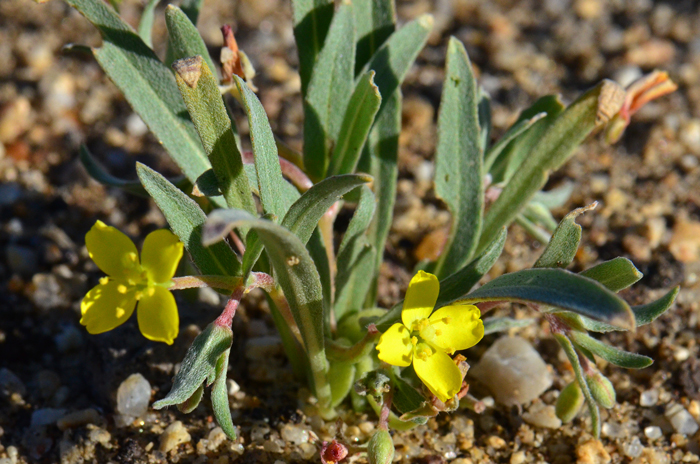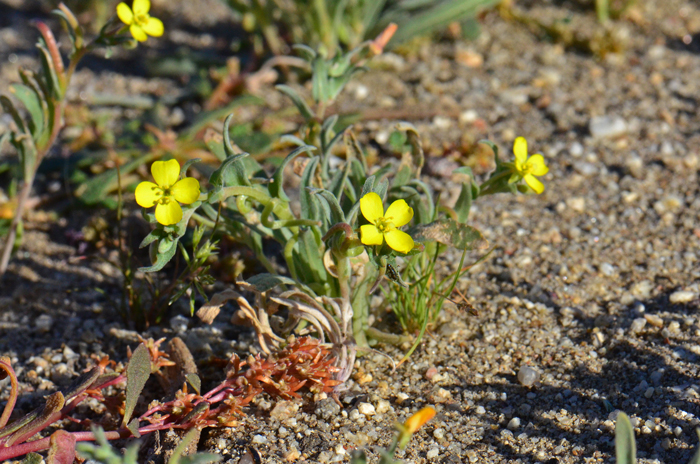Tetrapteron palmeri, Palmer Evening Primrose




Scientific Name: Tetrapteron palmeri (Camissonia)
Common Name: Palmer Evening Primrose
Also Called:
Family: Onagraceae, Evening Primrose Family
Synonyms: (Camissonia palmeri, Oenothera palmeri
Status: Native
Duration: Annual,
Size: Up to 8 inches more or less.
Growth Form: Forb/herb; plants strigose (few hairs) spreading
Leaves: Green; alternate; leaves both basal and cauline; narrowly oblanceolate, minutely serrate.
Flower Color: Yellow; flowers nodding; fruit a 4-angled capsule.
Flowering Season: April to May
Elevation: 1,800 to 4,000 feet.
Habitat Preferences: Desert flats, sagebrush scrub.
Recorded Range: Tetrapteron palmeri is found in the United States in CA, ID, NV, OR. California species occur in desert flats.
North America & US County Distribution Map for Tetrapteron palmeri (as Camissonia palmeri).
U.S. Weed Information: No information available.
Invasive/Noxious Weed Information: No information available.
Wetland Indicator: No information available.
Threatened/Endangered Information: No information available.
Genus Information: In North America, the USDA, Natural Resources Conservation Service includes Tetrapteron palmeri within the genus Camissonia. The synonym Camissonia is found in the west half of North America. The Plant List includes 16 accepted species for Chylismia. The synonym Camissonia is found in the west half of North America. All data is approximate and subject to taxonomic changes.
In the southwestern United States; Arizona has 22 species of Camassonia, California has 43 species, Nevada has 29 species, New Mexico has 6 species, Texas has 1 species and Utah has 19 species. All data is approximate and subject to taxonomic changes.
Comments: Tetrapteron palmeri is included in Southwest Desert Flora because of its California desert scrub locations.
In Southwest Desert Flora also see Miniature Suncup, Camissonia micrantha, Yellow Cups, Chylismia (=Camissonia) brevipes California Suncup, Browneyes, Chylismia (=Camissonia) claviformis and California Suncup, Eulobus californicus.

